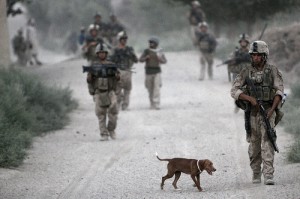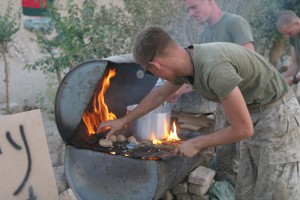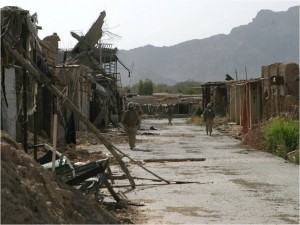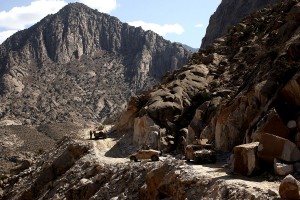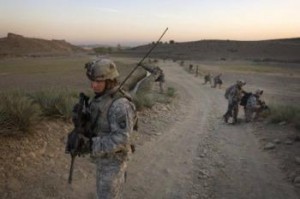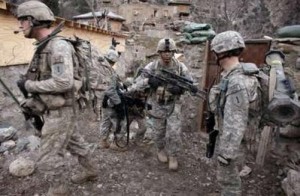Tired Narratives on Afghanistan: Holy Warriors, Militias and SOF
BY Herschel SmithJonathan Kay has been to a conference of “experts” on the border areas of Afghanistan and Pakistan. Here is the narrative.
I’ve spent the last two days at a conference in Freeport, Bahamas, sponsored by the Foundation for the Defense of Democracies, listening to dozens of specialists discuss the best way to pacify the Taliban-infested border areas of Afghanistan and Pakistan.
It’s been a humbling experience, as well as an educational one: I seemed to have been the only person on the speaking roster who hadn’t spent a good chunk of his or her life in south Asia. (Emphasis on “or her”: It surprised me how many women have adopted this remote, misogynistic corner of the globe as their focus of study.) Alongside the various ambassadors – current and former – there was a former police chief from Pakistan’s North-West Frontier Province, a former CIA operative, and a variety of brand-name global terrorism experts. Other speakers had done in-depth reporting from the region for Western publications, or run grass-roots NGOs. Most of the attendees agreed that the Taliban was strong, and getting stronger — and not one offered a simple solution.
A basic problem, it emerged, is the sheer complexity of the military dynamic in eastern Afghanistan and northwestern Pakistan. While journalists often talk about the Taliban as if it were a single, unified force, there are in fact many Talibans.
On the highest level are the hard-core, mass-murdering jihadis — men whose cause is inseparable from that of al-Qaeda; who are intermarried into al-Qaeda, and have even adopted Arabic as their primary language. Everyone in the room agreed that ordinary politics means little to these men: Holy War is in their blood.
In the middle tier are the tribal militias, village-defense forces, drug gangs and other Taliban-of-convenience. These groups shift their allegiance around opportunistically depending on who seems to be winning at any given moment.
Finally comes the hapless foot soldiers — illiterate peasants paid by the month to tote a gun and go where they’re told.
Each group calls out for a different strategy. In the case of the dedicated jihadis, the only thing to be done is kill them — which means boots on the ground, special forces, and drones. The militias, by contrast, respond quickly to shifts in popular opinion, propaganda and outreach. And the low-level foot-soldiers can be lured away by jobs — which means economic projects and nation-building.
Who has taught them this narrative? Where did they get it? As for Pakistan, Baitullah Mehsud’s fighters have proven resilient despite repeated operations against them. No turning to the right or to the left. As for Afghanistan, the indigenous insurgency in the South has proven resilient enough that the U.S. Marines in Garmser had to kill some 400 of them before relative peace came to the city in what at times was described as full bore reloading (only to be lost later because the British couldn’t hold the area).
Where is this group of hard core holy warriors which is so small that drones and SOF can take them out, and the multitudinous groups of militia that turn on a dime to shifts in opinion (rather than extort monies and enforce Sharia at the point of a gun)?
The conference of “experts” is parroting wishful thinking rather than realities on the ground in Afghanistan, in which the U.S. Marines are having to engage in heavy combat in order to pacify an indigenous insurgency in the South. There’s nothing like a conference of “experts” in a tropical getaway to make things interesting for us. Unfortunately, it would have been better for them to have had the conference in Now Zad.
The more interesting and relevant narrative for us comes from the Strategy Page. Note before we get to it that The Captain’s Journal called the interdiction of supplies through Khyber and Chaman before it was in vogue, called for engaging the Caucasus before Russia, called the campaign stalled (and even losing) in 2008 while General Rodriguez waxed on about how the U.S. was taking the fight to the Taliban.
Now finally, remember that we have called repeatedly (there are too many articles to link) for re-attachment of the SOF to the infantry, getting the infantry out of their FOBs into kinetics, classical counterinsurgency and population engagement, everywhere, all of the time with all resources.
Now to the Strategy Page.
Many in the Special Forces and regular forces have urged that there be more operations featuring closer cooperation and coordination between Special Forces and the more traditional combat troops. It’s expected that this will now be happening in Afghanistan.
In addition, Special Forces (and special operations troops in general) will get more resources. This is part of a trend, as commanders have found that efforts are more successful when Special Forces personnel are taking the point. This has led to some special operations troops getting special privileges, like wider authority to call in artillery fire and air strikes. Thus this “unleashing” of the Special Forces and other special ops units (SEALs and foreign commandos) will lead to some interesting situations.
They’re listening, and we’re partly there folks. No special privileges though. Re-attach them to infantry, just like Force Recon is attached to Marine infantry. Just another billet to do specialized things. The Army is dumbing down their expectations and taking the vast majority of their fighters out of the fight while also taking their SOF fighters out of the counterinsurgency operations. Time to end that nonsense. Get back to the basics.
